Ventilation Options for Your Storage Building
U.S. Chemical Storage offers exhaust fans to provide safe and compliant ventilation for both storage and dispensing/mixing applications. These fans are offered in explosion proof, non-explosion proof, and corrosion-resistant classifications and design. The proper ventilation and exhaust ensures air is continuously moving in and out of your chemical storage building and can maximize worker and environmental safety. Our wide variety of mechanical ventilation and exhaust options will give you the peace-of-mind you need to keep operations running smoothly.

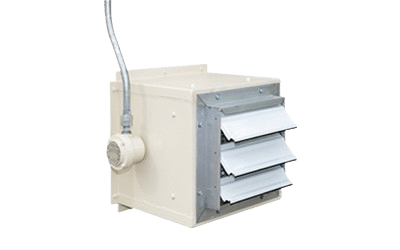
Ventilation system
U.S. Chemical Can Assist You With Chemical Storage Ventilation
Types of Chemical Storage Ventilation
Passive Chemical Storage Ventilation
U.S. Chemical Storage passive vents allow a steady flow of air in and out of your chemical storage building with no mechanical assistance. Passive ventilation creates a natural air flow and is best used with chemicals that do not produce hazardous vapors or debris. Vent openings include screens and louvers to prevent unwanted animal entry and to provide weather resistance.
Explosion Proof Mechanical Ventilation
Explosion proof forced ventilation is necessary for chemicals that produce flammable or explosive fumes as well as for storage buildings used for mixing and dispensing flammables. These mechanical vents perform a minimum of six air changes per hour at a rate of no less than 1 cubic foot/min.
Our explosion proof mechanical vents isolate the motor of the ventilation system from contaminants in the building to prevent an explosion.
Non-Explosion Proof Mechanical Ventilation
U.S. Chemical Storage supplies a non-explosion proof mechanical ventilation for use when storing non-explosive or non-flammable chemical inventory. Ventilation fans maintain a 1 CFM/SQFT air flow and perform a minimum of six air changes per hour.
*Dependent on type of fire-rating
Fume Snorkel Extractor Arm
The optional fume snorkel extractor arm consists of an anti-static explosion proof exhaust fan with a three joint telescopic extractor arm. The exhaust fan is mounted on roof, and the telescopic extractor arm attaches to the side of the ceiling column approximately 12 inches from the ceiling. A reducer attaches the arm to the main duct. The arm ranges approximately 3.5 to 7 feet horizontally and vertically.
Contact us for further detailed information about standard and optional ventilation systems and supporting ventilation accessory specifications for equipment used in chemical storage buildings.
Features & Benefits
- Weather-resistant steel construction
- Chemical & UV resistant coating
- Can be manufactured to meet EPA, NFPA 30 and NFPA 1
- Continuously welded, leak-tested sump
- Walk-in or rack style available
- 15-year structural warranty
Common Applications
- Hazardous Waste Storage
- Flammable and Combustible Storage
- Paint and solvent Storage
Downloadable Information & Fact Sheets
- Drawing: 2-Hour Bi-Direction Fire Rated Building (FL6115)
- Design Your Explosive Storage Magazine
- Warranty on Building & Accessories
- Buy or Build Chemical Storage Brochure
- Infographic: Choosing a Chemical Storage Building
- FireLoc 1-page Sheet
Compliance & Approvals
At U.S. Chemical Storage we strive to give you the best solution for your operations. This building and its accompanying accessories can be engineered to meet the following approvals and certifications based upon your unique set of needs.
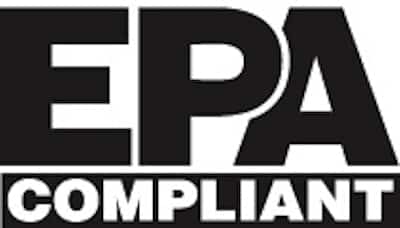
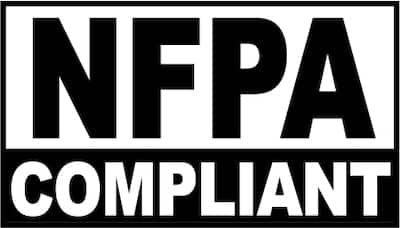
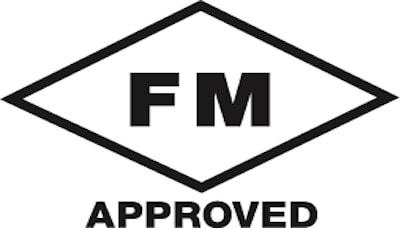
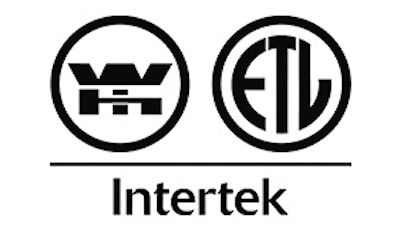
Frequently Asked Questions
First consult the Safety Data Sheet (SDS) to determine the type of chemical you’re storing and any storage requirements listed. There are two main classifications of buildings to consider: fire-rated and non-fire-rated steel buildings.
There are three main questions you should answer before engineering or design can begin on your building: what is to be stored, how much of it is being stored, and where is the location it will be stored? You will also need to consult with your local “Authority Having Jurisdiction” (AHJ) or local code expert to determine your area’s specific storage building requirements.
Our team at U.S. Chemical Storage has a wealth of knowledge, experience, and resources to help analyze your storage needs, but the final approval is made by the local AHJ, so you will need to ultimately ask them about your requirements early in the planning process.
The definition of a “sump” is a pit or reservoir providing containment for spilled liquids. U.S. Chemical Storage offers leak-proof spill containment sumps in each standard model. All our sumps are tested for leaks for a 24-hour period prior to finishing. The sump is then covered by a steel or fiberglass floor grating and can even be equipped with a resistant plastic sump liner to protect against corrosive chemical accidental spills. The size of the sump is dictated by code based on the volume of liquid being stored within the building.
Building size is determined by the amount of hazardous material you are planning to store, the need for occupancy or inspection around these materials, and must take into consideration the most efficient way of moving these materials into and out of your chemical storage building.
Location of the building can be either inside another building or outside to fit your needs. Fire Separation, which is the amount of fire rating required between two occupancies, or the separation distance between those two occupancies, is determined by the type of chemical or hazard being stored, and distances between buildings, egress pathways, or environmental features. To determine the required fire separation, it is best to consult with your local code authority. Inside another building or within 10 feet of another building, you’ll be required to have a 4-hour fire rating. If your hazmat storage building is located at distances 30 feet or greater your building may not be required to have a fire rating at all.
Request a Quote
VENTILATION OPTIONS
Exhaust Fan Options for Your Storage Building
There are many exhaust fan options available to complete your U.S. Chemical Storage building customization.
RELATED ARTICLES

How To Store Lithium Batteries
Lithium batteries are often used in today’s electronic environments.
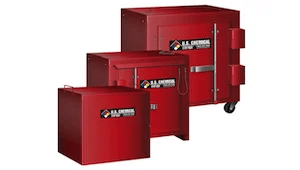
Explosive Storage Magazines
Prevent accidents by storing your high and low explosives properly.
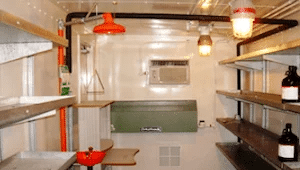
Pharma Hazmat Storage
This manufacturing process needed a compliant 90 day storage solution.

